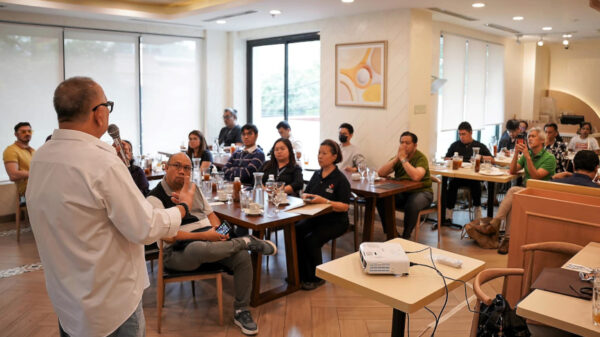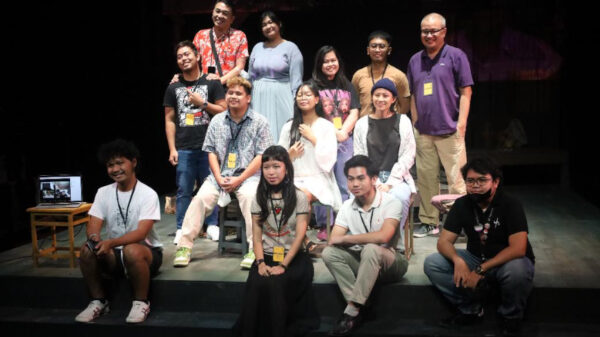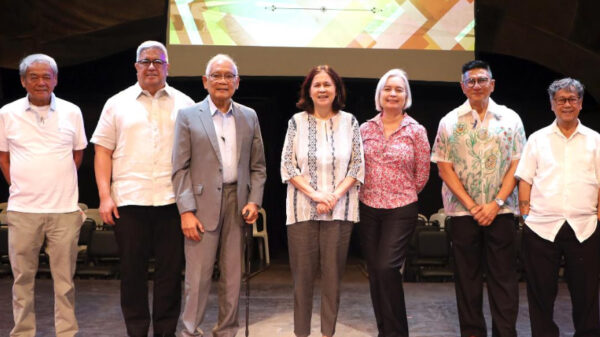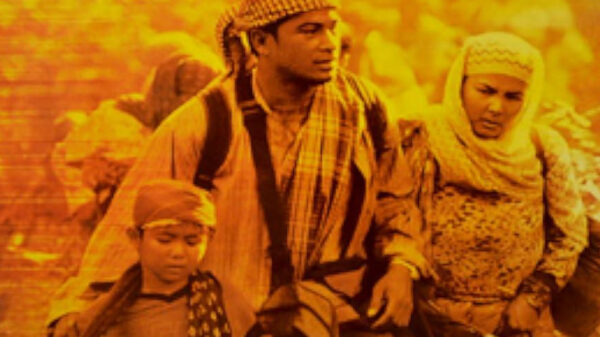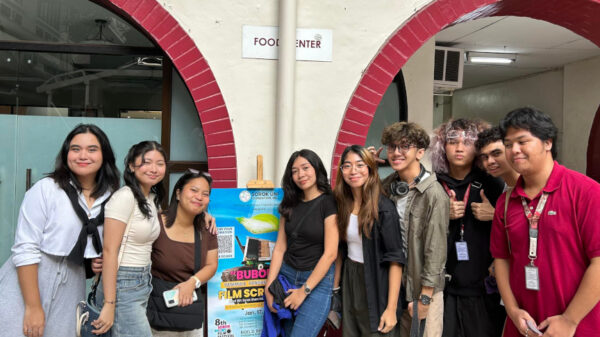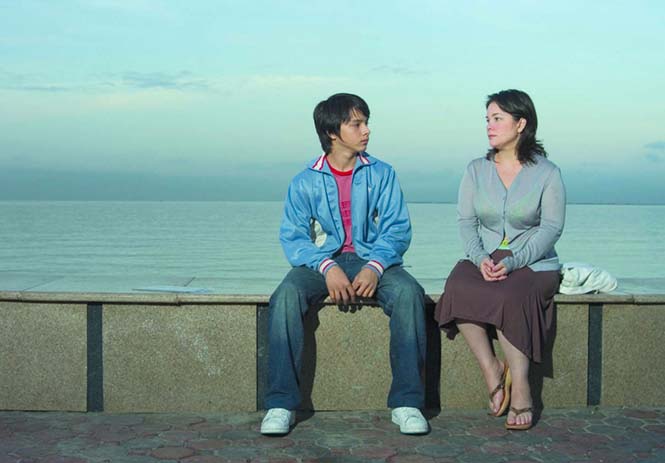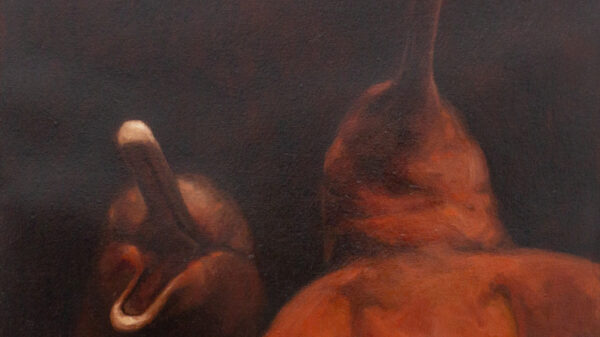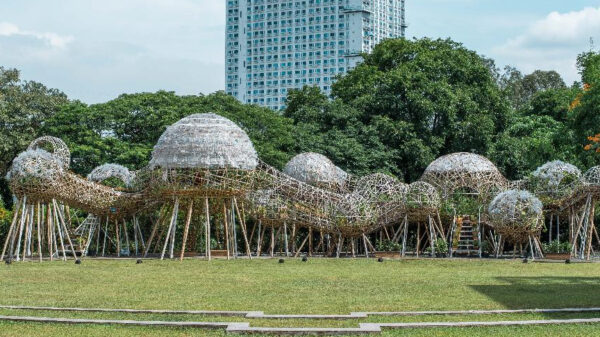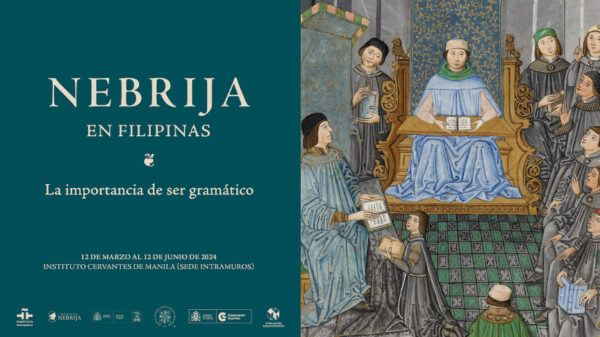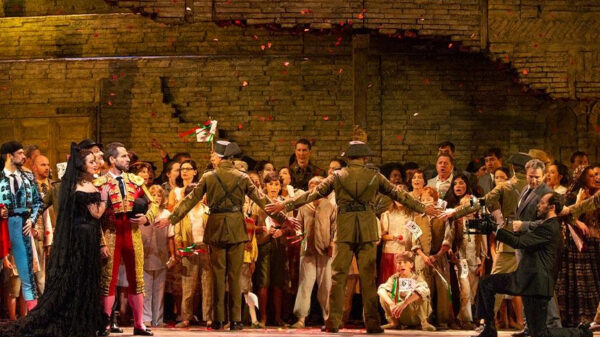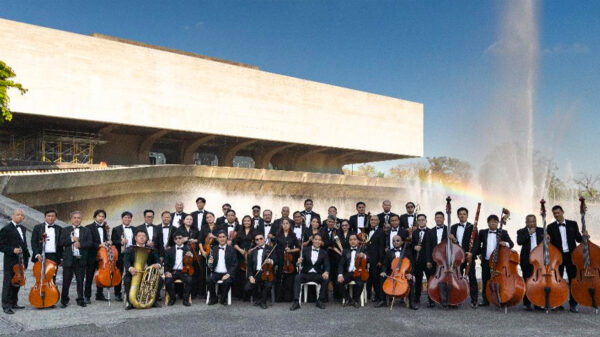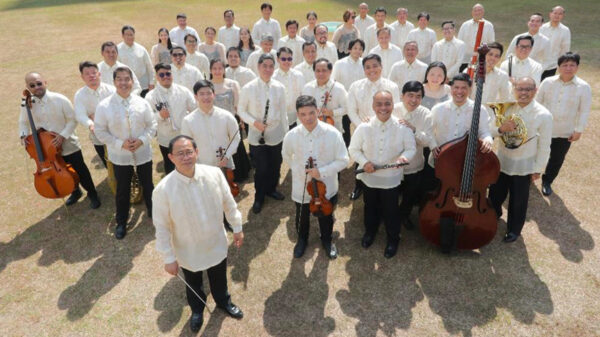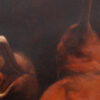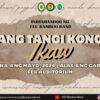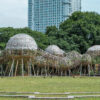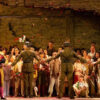As a development worker for years in the far-flung indigenous communities in the Mindanao mountains, finding nature just right outside one’s doorstep has been a much missed memory after recent city-dwelling years. So when I got the invitation of some friends to travel to the Mountain Province, a landlocked province in the Cordillera Administrative Region in Luzon, to support a community effort to help build a children’s library made of trash filled plastic bottles, I immediately packed and sped to the nearest bus terminal for the P445 trip to Baguio City to rendezvous with the group; and from Baguio, caught the non-aircon buses at the Dangwa Station at the back of the Center Mall for P212 that took us through the six hour treat to the dramatic cliffs and mountains of the Cordilleras.
BONTOC
Poblacion Bontoc is quite a compact town center where the provincial capitol building, plaza, market, municipal hall, and commercial center are located. One can either just hike or ride around in a tricycle for eight pesos per trip. The Bontoc Provincial hospital has been one of the facilities I find notable in the country for their promotion of indigenous and alternative health practices; they encourage utilization of Igorot herbs and practices and a traditional Chinese acupuncturist serves fulltime in their physical therapy unit.
We stayed at the Churya-a Hotel & Restaurant that is just situated along the national road – a five story building with verandas on each floor with a cozy view of the townscape. Nights at the poblacion, though, could be a disappointment to travelers seeking more quiet spaces as townspeople spend their time at karaoke bars and disco live bands in the vicinity. Bontoc has been known as the first mining town in this mountainous region of North Luzon, where locals would travel to for leisure and business.
For breakfast, a must-try would be the early morning coffee at the Bontoc Public Market. Locally sourced and organic, Arabica coffee blends only cost ten pesos per cup.
 The bottle library is being constructed in the upland village of Guina-ang which is an hour drive of seven kilometers of winding roads up the mountains. Next to Guina-ang is the village of Mainit, which is known for its hot sulphur springs. We decided to spend one night in these invigorating baths before getting into hard labor. The jeepney ride to Mainit and Guina-ang is parked beside the Shell Gas station in Bontoc. The jeepney leaves usually at 2:30 PM and the next at 4:00 P.M. On days with no rain, one can ride on top of the jeepney and enjoy much of the view of rice terraces while going up. Mainit accommodations priced at P300 per person were very modest. One must be warned that water from the faucet (when flowing) is still sourced from the hot springs, so one could burn him/herself. The hot spring water piped into small pools could be murky, but locals say that it is a good sign that various healthy minerals are present. A warm soak is just a perfect match for this village’s very cool climate.
The bottle library is being constructed in the upland village of Guina-ang which is an hour drive of seven kilometers of winding roads up the mountains. Next to Guina-ang is the village of Mainit, which is known for its hot sulphur springs. We decided to spend one night in these invigorating baths before getting into hard labor. The jeepney ride to Mainit and Guina-ang is parked beside the Shell Gas station in Bontoc. The jeepney leaves usually at 2:30 PM and the next at 4:00 P.M. On days with no rain, one can ride on top of the jeepney and enjoy much of the view of rice terraces while going up. Mainit accommodations priced at P300 per person were very modest. One must be warned that water from the faucet (when flowing) is still sourced from the hot springs, so one could burn him/herself. The hot spring water piped into small pools could be murky, but locals say that it is a good sign that various healthy minerals are present. A warm soak is just a perfect match for this village’s very cool climate.
Spending many days doing community work in the village of Guina-ang has given me a glimpse of the strong collective indigenous culture among the Bontocs. United by a common history and struggle, the Bontocs have learned to rely on their strength as one community to warmly welcome initiatives from the outside if they are deemed beneficial to all and shun any external action that could put them at a disadvantage. The steady progress of the bottle library is attributed to this cooperative spirit that is shown by each one, young and old, in this mountain village.
SAGADA
This first trip of mine to this part of the Cordilleras would be sorely lacking without experiencing Mountain Province’s pride: Sagada. In Bontoc, jeepneys going up to Sagada are located on the street beside the Walter Clap Centrum. Travelling up to this other mountain town would just take less than an hour.
I first noticed the significant drop in temperature when we arrived. We were there in February, the coldest month, when it is reported that temperatures drop to 12 degrees Celsius at night. I stayed at Alfredo’s Inn for P250 a night for a single bed with a common bathroom with hot showers and Wi-Fi. All other hostels also charge the same rate, though with just minimal differences, such as a viewing deck and better accessibility to the town’s public amenities and attractions.
Sagada is known for its natural wonders of caves, falls, limestone cliffs, rice terraces, burial sites, and other historical landmarks. It has a land area of only 8,000 hectares and most spots can actually be reached by just walking. Mountain bike rentals are also available for P500 per day or P100 per hour. While we managed to find the Echo Valley and the Hanging Coffins on foot, I personally getting a guide mainly for safety. There are two official guide organizations in town–the Sagada Enviromental Guides Association and the Sagada Genuine Guides Association. These associations have done a very competent job in organizing and standardizing their rates for guide services and van rentals. The tourism office ensures transparency through officially posting them and assuring that there are no hidden charges.
A friend came with me to conquer the cave connection, which can be done anytime between 7:00 AM to 4:00 PM. The caving journey begins at the huge opening of Lumiang Burial Cave, which is a 40 minute walk from the town center. The challenge then starts with a crevice that is narrow enough to fit one person. The passage then led down to various awesome rock formations. Moisture is always present on the rocks, so extra caution and strict compliance to instructions have to be observed to avoid accidents. To facilitate safe access through rocks and tunnels, guides usually offer their shoulder as a “human step stool.” There are also built-in ropes with knots in very challenging areas. There are parts in the exploration that one has to swim during rainy season when some of the pools are filled with water. Yet guides can offer an alternate route if this is not preferred. The tour lasted for four hours until we exited at Sumaging Big Cave. The standard fee is P800 for one to two visitors and P400 for every additional visitor. Another P400 is charged if transportation to and from the town center is availed.
 Finishing the cave connection did give me a great sense of physical achievement. That was then I understood what the t-shirt print “I survived Sagada” really meant. Important reminders for anyone who would attempt this feat would be to wear loose shirt, shorts or loose pants, and rubber sandals/flip flops/ rubber shoes. Guides generally do not advise people with fear of heights and/or closed space, heart ailments, asthma, and injuries to go through this long route and would suggest other less strenuous alternatives such as the short course caving.
Finishing the cave connection did give me a great sense of physical achievement. That was then I understood what the t-shirt print “I survived Sagada” really meant. Important reminders for anyone who would attempt this feat would be to wear loose shirt, shorts or loose pants, and rubber sandals/flip flops/ rubber shoes. Guides generally do not advise people with fear of heights and/or closed space, heart ailments, asthma, and injuries to go through this long route and would suggest other less strenuous alternatives such as the short course caving.
The short course caving is an hour and 30 minutes of spelunking at the Sumaging Big Cave. This cave has a huge chamber and there’s a small tunnel at the end. To date, guides report that this is the most frequented tourist attraction in Sagada. Visitors are treated to amazing rock formations, huge open chambers and boulders to climb over. Sumaging cave is the habitat to thousands of bats. Visitors usually come upon a dung section in one of the huge spacious chambers. All visitors climb back at the same route. On the way back to town, the guide usually brings guests to the entrance of Lumiang/Burial Cave and drop by at the view point if Sugong Hanging Coffins, which is an hour walk. The guide fee is P500 pesos for up to four visitors.
All these other adventure options are in the list of the things I would love to conquer when I get back (Much cheaper when done in groups):
- The Sagada to Mainit Hotspring Trekking is a five to seven hour climb and trek through rice terraces, villages, and rivers. Guests would then spend a night at the Mainit hotsprings. Guide fee is P2,500 per visitor.
- The Mt. Sisipitan trekking is a six hour hike back and forth up a mountain of mossy and pine forests with an elevation of more than 2,200 meters. Guide fee is P2,000 per person.
- The Danum – Mt. Langsayan trekking is a three to four hour traverse hike through mossy and pine forests that overlook two municipalities and offers a vast view of the rice terraces. Guide fee is P1,000 for up to three visitors.
- The Marlboro Country trekking is an hour and 30 minutes hike from the mountain’s base to the peak. The Mt. Ampacao trekking is a hike to an elevation of about 1,880 meters. Guide fee for each trek is P600 good for up to 10 visitors.
- The trip to the Bomod-ok Big Waterfall is a three hour hike back and forth from the Bangaan road. Fee: P600 good for up to 10 visitors.
- The sunrise viewing at the Kiltepan mountain ranges offers an “aerial” view of rice terraces. The trip starts at 4:30 in the morning. Fee is P450 per ride which is good for up to 10 visitors.
- The sunset viewing at Lake Danum starts at 4:30 in the afternoon. Visitors also stop by at Sagada Pottery. Fee is P500 per ride which is good for up to 10 visitors.
The cold nights in Sagada actually spur much drinking and videoke singing. You can either have beer or the locally produced bugnay or rice wine. A 9:00 PM curfew is imposed though, and there are only a number of bars open beyond this. One such is the Sagada Pine Café, which is usually packed with booze and music-seeking foreigners and locals. This place has its hushed reputation of being a small Amsterdam in this part of the country. Go and figure out why for yourself.
Waking up in chilly mountain province mornings has been indeed a surreal joy. Watching the early bustle of women harvesting fresh vegetables and the view of faintly sunlit fog covered slopes from afar are exactly the perfect rustic vibes I have and will always long for. Each new start of the day is another beginning for the endless choices of adventures for all types of thrills.
And so one visit to this upland haven can never be enough; one definitely has to come back for more.
*FIRST PUBLISHED IN ZEST MAGAZINE


